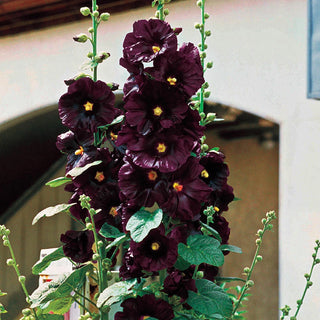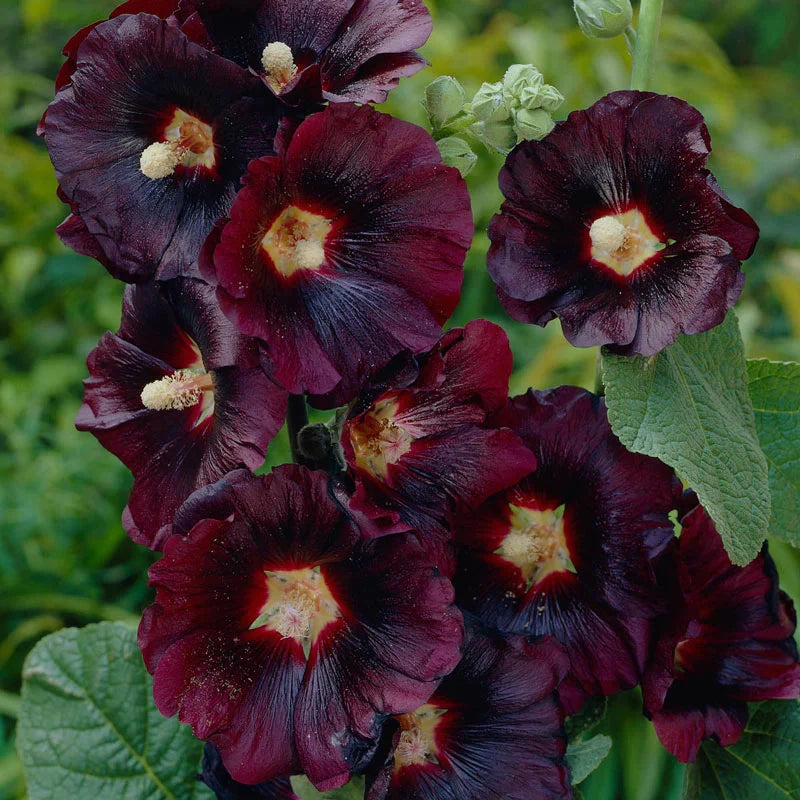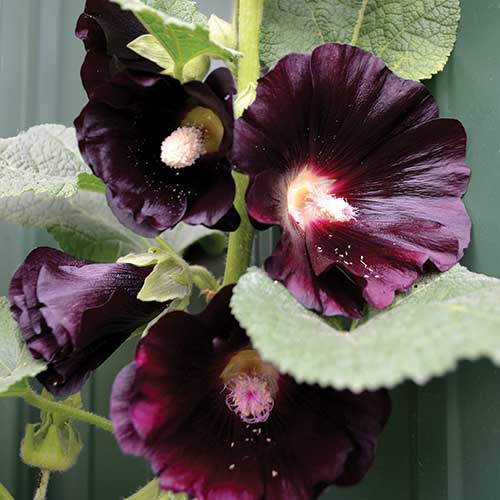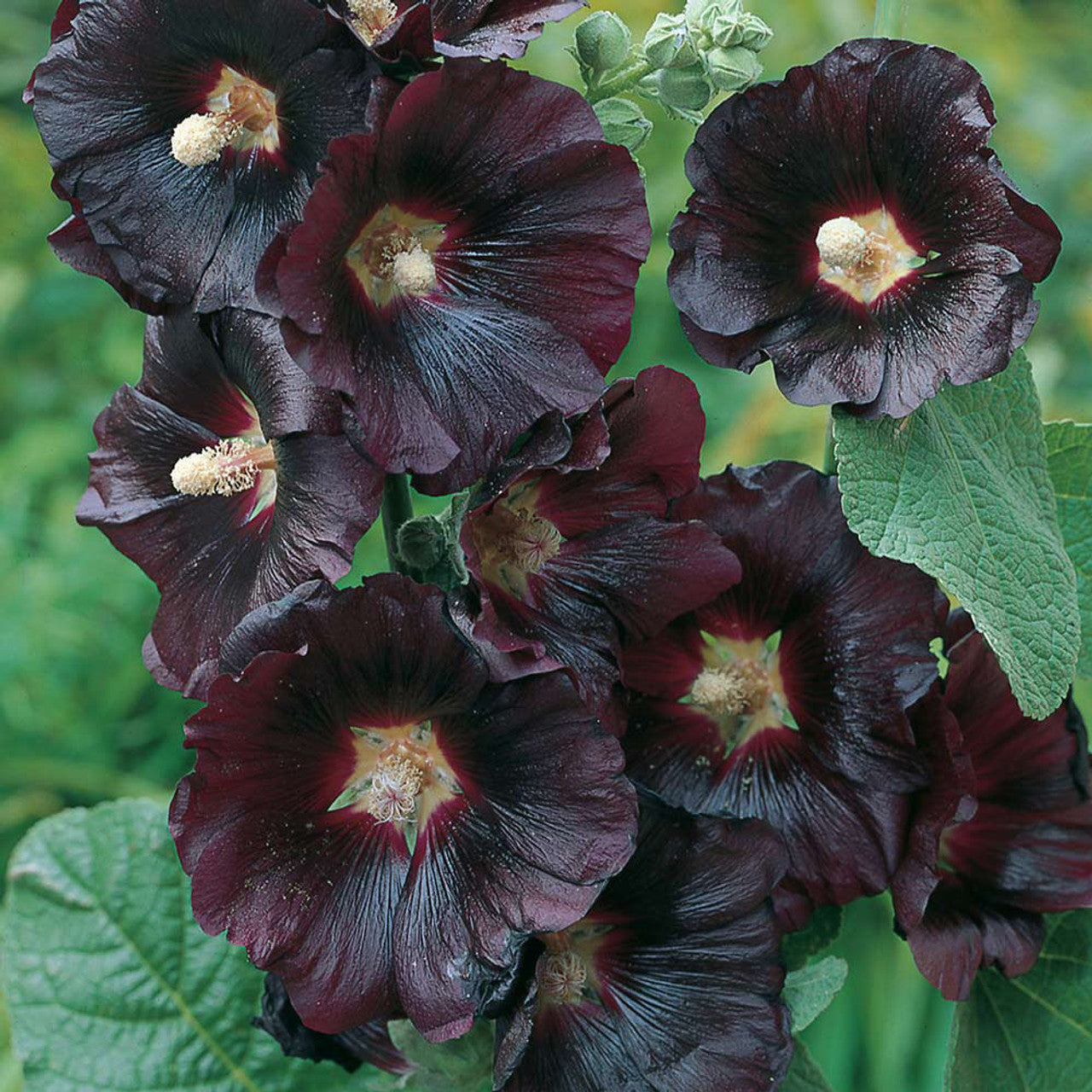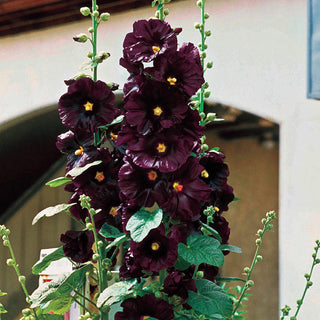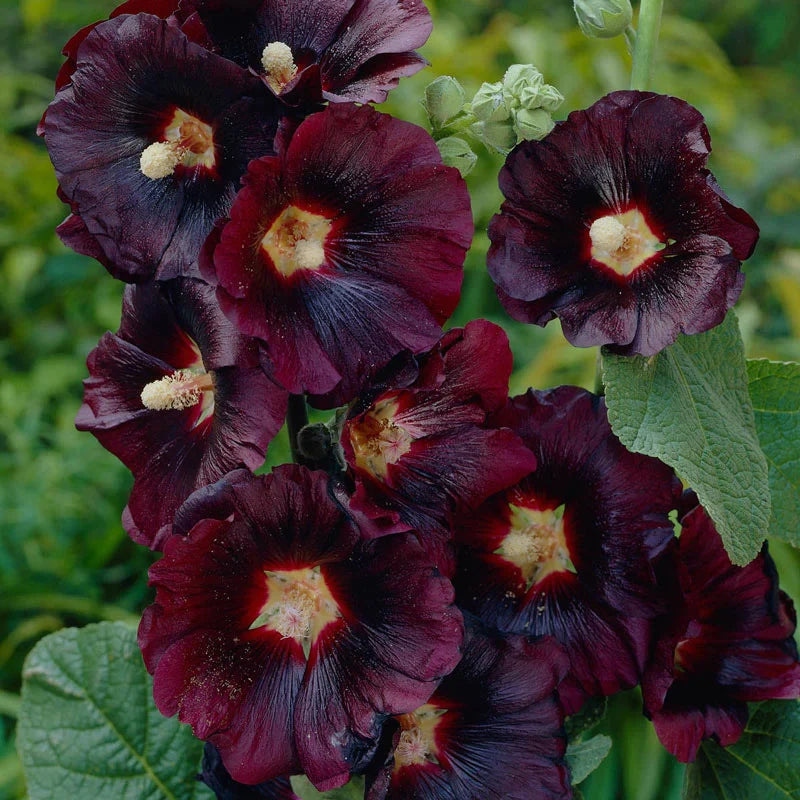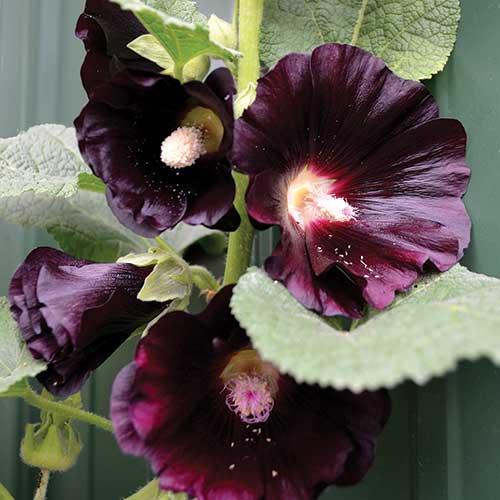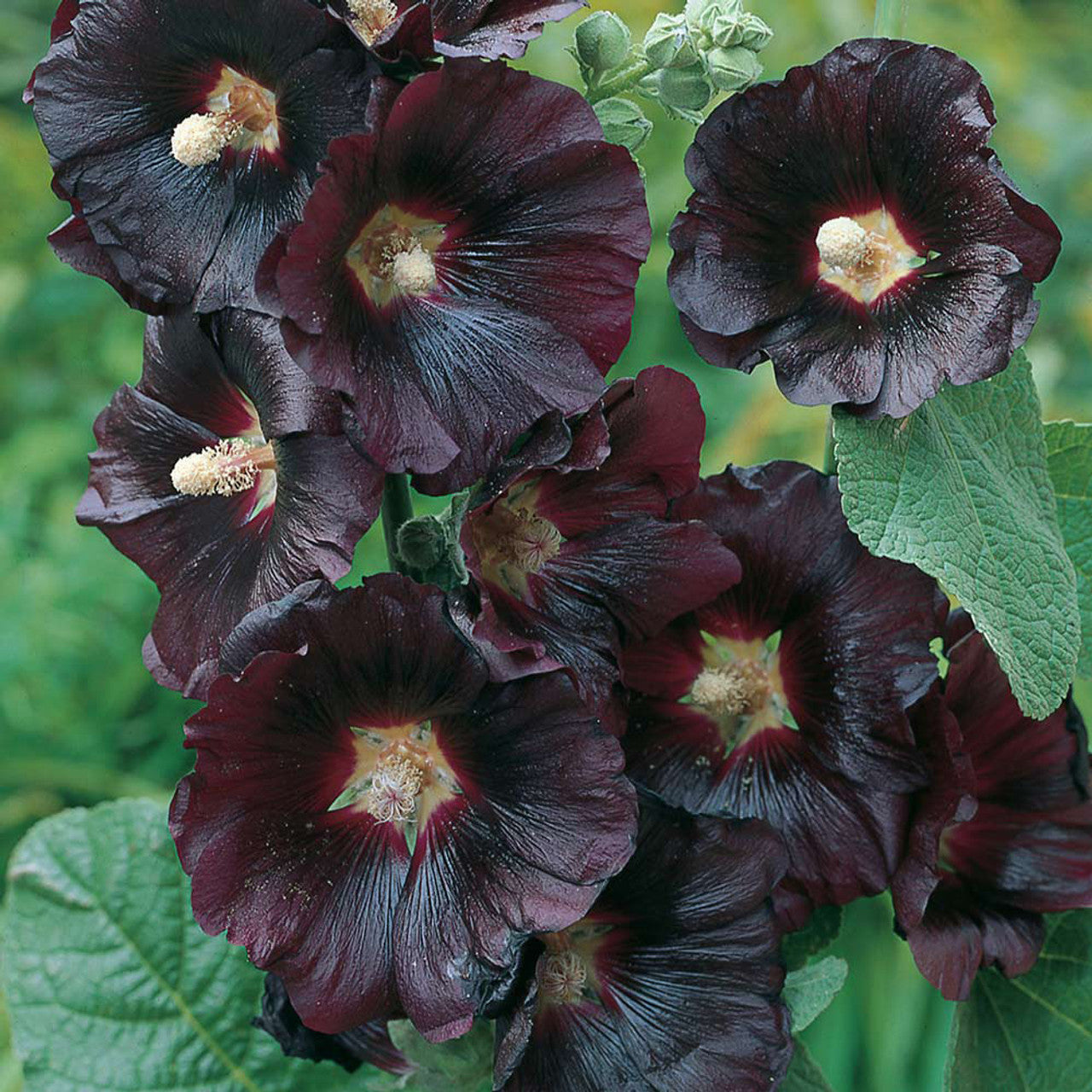1
/
of
4
The Black Hollyhock
€12,95 EUR
Sale price
€12,95 EUR
€21,95 EUR
Unit price
/
per
Sale
Sold out
Tax included.
Shipping calculated at checkout.
Couldn't load pickup availability
Description
Elevate your garden with the striking beauty of the Black Hollyhock (Alcea rosea), a rare and dramatic flowering plant that brings an air of sophistication and elegance to any space. This exceptional variety produces tall, dark flower spikes with velvety, near-black petals that create a stunning contrast against bright green foliage. Perfect for gardeners seeking an exotic touch or a focal point in their flower beds, The Black Hollyhock is not only visually captivating but also relatively easy to grow, making it ideal for both novice and experienced gardeners.
Key Features:
- Unique Color: Deep, dark maroon to almost black flowers with a velvety texture.
- Height: Grows up to 6-8 feet tall, making it perfect for background planting or as a statement piece.
- Bloom Period: Blooms in mid-to-late summer, providing a long-lasting display of rich, dramatic flowers.
- Attracts Pollinators: The large, showy blooms attract bees, butterflies, and other beneficial pollinators, enhancing biodiversity in your garden.
- Hardy Plant: Thrives in USDA Zones 3-9, making it adaptable to a variety of climates.
Specifications:
- Botanical Name: Alcea rosea 'Black'
- Common Name: Black Hollyhock
- Flower Color: Dark purple-black, near-black
- Mature Height: 6-8 feet
- Mature Spread: 18-24 inches
- Sun Requirements: Full sun
- Soil Requirements: Well-drained, loamy soil
- Watering: Regular watering; prefers slightly moist but well-drained soil
- Plant Type: Biennial or short-lived perennial
Planting Instructions:
- Planting Location: Choose a sunny spot with well-drained soil. Black Hollyhocks thrive in full sun but can tolerate some light shade.
- Soil Preparation: Ensure the soil is rich, loamy, and well-drained. Adding organic matter or compost will improve soil fertility.
- Sowing: Directly sow seeds in the garden in early spring or start indoors 6-8 weeks before the last frost. Lightly cover seeds with soil and keep moist.
- Spacing: Space seeds or young plants 12-18 inches apart to allow for optimal growth and air circulation.
- Watering: Water regularly, especially during dry spells, but avoid waterlogging the soil.
- Maintenance: Deadhead spent flowers to encourage continued blooming and prevent seed formation.
